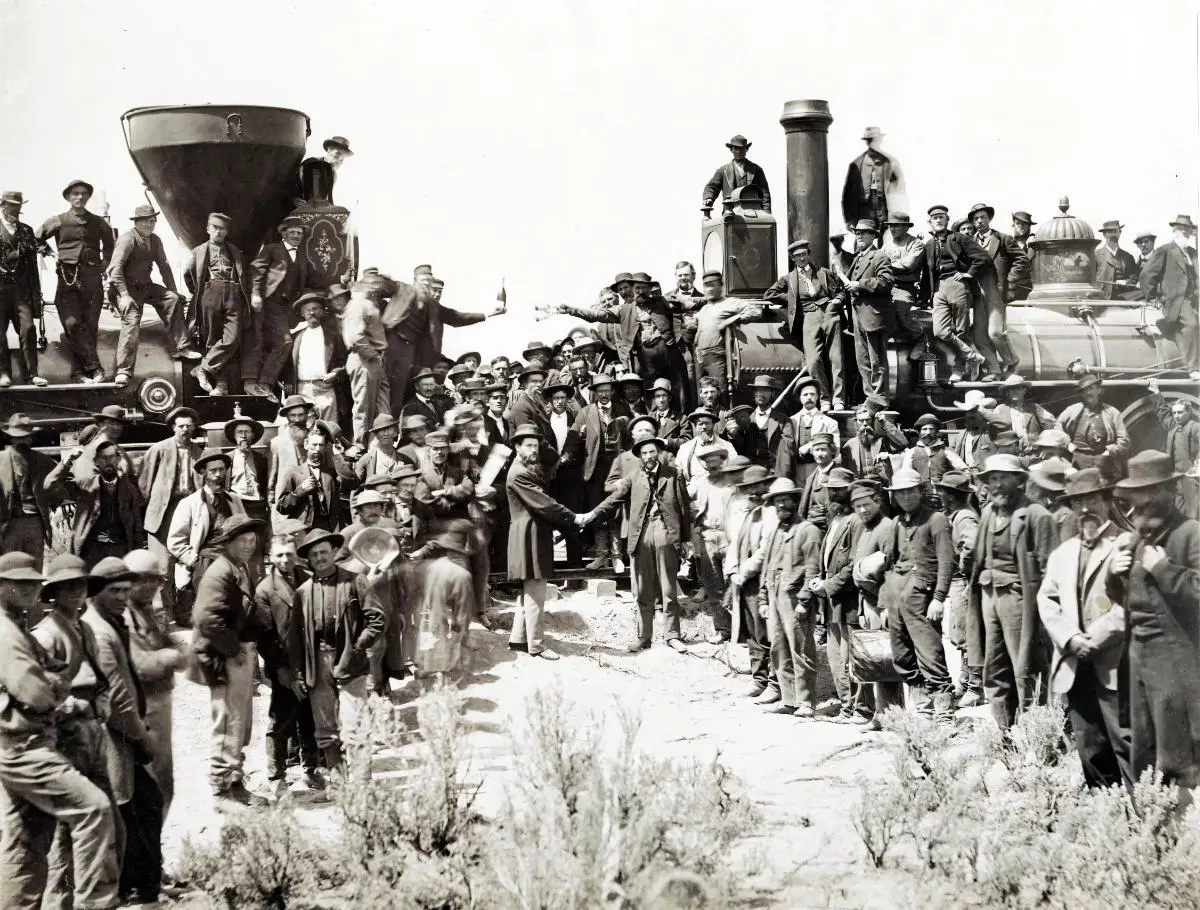The Silk Road vs. The Trans-Siberian Railway: 5 Historical Differences
The Silk Road fostered ancient trade and cultural exchange across continents, while the Trans-Siberian Railway, a modern industrial marvel, boosted Russia's economic expansion and strategic control in Asia.

Throughout history, trade routes have been the lifelines of civilizations, enabling the exchange of goods, culture, and ideas across vast distances. Among the most famous of these routes are the ancient Silk Road and the modern Trans-Siberian Railway. While both have played crucial roles in shaping the regions they traverse, they differ significantly in their origins, purposes, and impacts.
This article explores five key historical differences between the Silk Road and the Trans-Siberian Railway, providing a comparative analysis that highlights their distinct contributions to global history.
1: Origins and Time Period
The origins of the Silk Road and the Trans-Siberian Railway are rooted in entirely different historical periods, reflecting the evolution of human societies and technological advancements over time.
- The Silk Road emerged around the 2nd century BCE during the Han Dynasty in China, as a network of trade routes connecting the East and West. It spanned over a millennium, reaching its peak during the Tang and Mongol Empires. The Silk Road was not a single road but a complex web of land and sea routes that facilitated the exchange of goods, ideas, and cultures across Asia, the Middle East, and parts of Europe.
- The Trans-Siberian Railway, on the other hand, was a product of the late 19th and early 20th centuries, completed in 1916. It was constructed by the Russian Empire during the Industrial Revolution, a time when railroads were revolutionizing transportation and communication. Unlike the ancient Silk Road, the Trans-Siberian Railway was a modern engineering marvel, built with the specific aim of connecting the vast expanse of Russia from Europe to the Pacific.
This contrast in origins highlights the different eras in which these routes were conceived, with the Silk Road representing the ancient world’s reliance on traditional trade networks and the Trans-Siberian Railway symbolizing the industrial age’s push towards modernization and technological progress.

2: Geographical Scope and Coverage
The geographical scope of the Silk Road and the Trans-Siberian Railway reflects their differing purposes and the nature of the regions they served.
- The Silk Road was an expansive network that covered multiple regions, stretching from China through Central Asia to the Mediterranean, and even extending to North Africa. It connected major civilizations, including those in China, India, Persia, the Arabian Peninsula, and the Roman Empire. The Silk Road’s routes traversed diverse landscapes, including deserts, mountains, and seas, making it a truly global trade network that linked distant cultures and economies.
- The Trans-Siberian Railway, however, is a single continuous railway line running across the vast expanse of Siberia, connecting Moscow to Vladivostok. While it primarily serves the Russian Empire (and later the Soviet Union and modern Russia), it also links to neighboring countries such as Mongolia, China, and Japan through connecting lines. The railway covers over 9,000 kilometers, making it the longest railway line in the world, but its geographical scope is largely confined to the Eurasian landmass, specifically within the borders of Russia and its immediate neighbors.

The Silk Road’s wide-reaching network stands in contrast to the more concentrated, albeit extensive, coverage of the Trans-Siberian Railway, reflecting the different scales and objectives of these two trade routes.
3: Cultural and Economic Impact
One of the most significant differences between the Silk Road and the Trans-Siberian Railway lies in their cultural and economic impacts.
- The Silk Road was not just a trade route; it was a conduit for cultural exchange. It facilitated the spread of religions such as Buddhism, Christianity, Islam, and Zoroastrianism, and enabled the exchange of art, science, technology, and literature across continents. The Silk Road’s impact on the cultural and intellectual development of the regions it connected is immeasurable, contributing to the flowering of civilizations through the exchange of ideas and knowledge.

- The Trans-Siberian Railway primarily served economic and military purposes. It played a crucial role in the economic development of Siberia and the Russian Far East, enabling the extraction and transport of natural resources like timber, coal, and minerals. While it did facilitate some cultural exchange within Russia and with neighboring regions, its primary impact was economic, transforming Siberia from a remote wilderness into a region integrated into the Russian and global economy.
In essence, the Silk Road’s legacy is one of cultural enrichment and cross-cultural interactions, while the Trans-Siberian Railway’s legacy is more focused on economic development and the expansion of Russian influence in Asia.
4: Technological Context
The Silk Road and the Trans-Siberian Railway were products of vastly different technological contexts, reflecting the advancements of their respective eras.
- The Silk Road relied on ancient modes of transportation, such as caravans of camels and horses, and maritime vessels for sea routes. The journey along the Silk Road was often slow and perilous, with traders facing challenges such as harsh climates, bandits, and political instability. The technology of the time limited the speed and volume of trade, making long-distance trade an arduous and risky endeavor.
- The Trans-Siberian Railway represents the technological advancements of the Industrial Revolution, with steam (later diesel and electric) locomotives enabling the rapid and reliable transportation of goods and people across vast distances. The railway reduced travel time from Moscow to Vladivostok from several months to just a few days, revolutionizing the movement of resources, military forces, and settlers. The technological superiority of the Trans-Siberian Railway reflects the industrial age’s capacity to overcome the geographical barriers that had constrained earlier trade routes like the Silk Road.
This difference in technological context underscores the evolution of human capabilities, from the reliance on animal and wind power in ancient times to the harnessing of steam and electricity in the modern era.
5: Political Influence and Strategic Importance
The political contexts in which the Silk Road and the Trans-Siberian Railway operated also set them apart, reflecting the changing nature of state power and strategic interests over time.
- The Silk Road was a network influenced by the rise and fall of various empires, including the Han, Roman, Persian, and Mongol Empires. Control over different sections of the Silk Road often shifted due to wars, conquests, and changing alliances. Despite this, the Silk Road remained a vital artery for trade and cultural exchange across empires, serving as a bridge between East and West even amid political turmoil.
- The Trans-Siberian Railway was built by the Russian Empire as a strategic asset to solidify its control over Siberia and the Far East. It played a significant role in Russian military strategy, especially during conflicts like the Russo-Japanese War and World War II, by enabling the rapid movement of troops and supplies across the vast Russian territory. The railway also facilitated the settlement and economic exploitation of Siberia, further strengthening Russia’s geopolitical position in Asia.
The Silk Road’s influence was shaped by the shifting dynamics of ancient empires, while the Trans-Siberian Railway was a deliberate tool of statecraft, designed to enhance Russia’s strategic and economic power in the modern era.
Conclusion
The Silk Road and the Trans-Siberian Railway, though both crucial trade routes, differ profoundly in their historical contexts, purposes, and impacts. The Silk Road symbolizes the ancient world’s interconnectedness through trade and cultural exchange, spanning multiple civilizations over centuries. In contrast, the Trans-Siberian Railway represents the industrial age’s achievements in engineering, serving as a powerful instrument of economic development and political strategy for Russia.
By comparing these two iconic routes, we gain insight into how human societies have evolved in their approaches to trade, technology, and state power, reflecting the broader currents of history from the ancient to the modern world.





